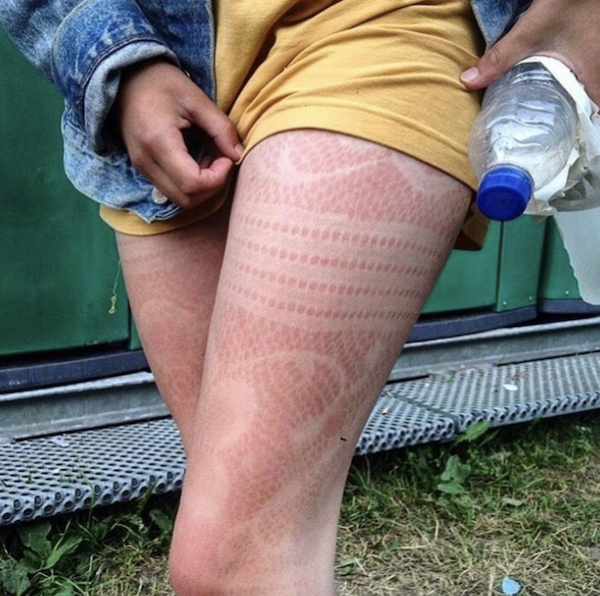The newest registered user is гераскинс
Our users have posted a total of 48009 messages in 7050 subjects

WORLD CLOCK
INFO VINE * 50 Weird Inventions From The Consumer Golden Age *
Valley of the Sun Casual Club :: WORDS , FACTS , DATES , GAMES & TRIVIA & HISTORY :: INFORMATION VINE
 INFO VINE * 50 Weird Inventions From The Consumer Golden Age *
INFO VINE * 50 Weird Inventions From The Consumer Golden Age *

Photo Courtesy: [GraphicaArtis/Hulton Archive/Getty Images]
Throughout history, people around the world have devised inventions to simplify and improve everyday life. While some of these inventors radically changed society, others made only a minor impact. As time marches on, some have fallen into complete obscurity.
Though these devices had a practical purpose, many were just too clunky, expensive, or limited in their functionality. However, some do resemble modern technologies used today. Here are 50 weird inventions from the consumer golden age.
Isolator
The Isolator, invented by engineer Hugo Gernsback in 1925, was intended to isolate the user from visual and audible distractions. An attached oxygen tank made it possible for someone to breathe in the enclosed device, while its large size helped prevent suffocation.

Photo Courtesy: [Bettmann/Bettmann/Getty Images]
When people began testing out the Isolator, some quickly rejected the unusual invention due to experiencing claustrophobia. Additionally, some became drowsy in the dark, quiet environment created by the device.
Monowheel
A monowheel is a vehicle similar to a unicycle where the rider sits inside or next to the wheel. It is also known as a monocycle or a uniwheel. The first monowheels, introduced in the late 1800s, were either hand-cranked or pedal-powered.

Photo Courtesy: [Nationaal Archief/Wikimedia Commons]
British inventor John Purves introduced a motorized monowheel in the early 1930s. Known as the Dynasphere, it was capable of traveling up to 30 miles an hour. While not widely used today, monowheels are still available, with some newer models even glowing in the dark.
Radio Stroller
Guglielmo Marconi developed the earliest practical radio receivers and transmitters in the late 1890s. Radio technology entered commercial use in the early 20th century, primarily for music and news broadcasts.

Photo Courtesy: [Keystone-France/Gamma-Keystone/Getty Images]
The radio stroller emerged in the 1920s, as radio technology became increasingly available to consumers. The strollers pictured here have antennas and loudspeakers attached, allowing the mothers to play music to lull their babies to sleep.
Wooden Bathing Suit
The first bathing suits emerged after the Renaissance, with Victorian-era swimwear often being cumbersome and potentially dangerous in the water. Form-fitting bathing suits became available in the 1900s and gained substantial popularity despite certain groups opposing them.

Photo Courtesy: [Nationaal Archief/Wikimedia Commons]
Wooden bathing suits made from spruce hit the market in the late 1920s. Because of the buoyancy of the wood, these suits were supposed to help fearful swimmers venture into the water. According to the May 1930 issue of Popular Science magazine, wooden bathing suits were the latest trend, and none of them cracked or warped.
Radio Hat
One of the earliest portable media players, the radio hat, was invented in the 1920s. A Berlin engineer, wanting to listen to Sunday sermons while driving and playing golf, later developed a second version, featured in the August 1930 issue of Modern Mechanix magazine.

Photo Courtesy: [Nationaal Archief/Wikimedia Commons]
However, radio hats did not take off with the general public until the 1940s, when a novelty store in Brooklyn debuted the Man From Mars Radio Hat. A buying frenzy resulted as numerous publications promoted the product, including Life magazine. The popularity of radio hats proved short-lived, with transistor radios quickly outpacing them in the 1950s.
Invalid Piano
The invalid piano, designed for bedridden individuals, was reportedly invented in Great Britain in 1935. It rested at the foot of a person's bed, extending outwards towards their hands, and had an adjustable keyboard, allowing for maximum accessibility.

Photo Courtesy: [Nationaal Archief/Wikimedia Commons]
Interestingly, the design of the invalid piano is similar to that of a modern keyboard. While it is unknown if the invention was commercially successful, there are almost no photographs of the invalid piano, indicating that it was not on the market for long.
Bike Tire Swimming Aid
As it turns out, bathing suits made from wood were not the only weird invention used in the water. The men and women in this photograph from 1925 in Germany are wearing bike tires as swimming aids.

Photo Courtesy: [Nationaal Archief/Wikimedia Commons]
Similar to the spruce used in wooden bathing suits, bike tires helped swimmers stay afloat. Bike tires are not popular swimming aids anymore, but the design of the swim ring widely used today draws inspiration from the inner tubes of pneumatic tires.
Hamblin Glasses
Hamblin glasses, introduced in 1936, have built-in mirrors, enabling users to see at a 45-degree angle. With these glasses, people could read while lying on their backs without putting strain on their necks.

Photo Courtesy: [Nationaal Archief/Wikimedia Commons]
Alternatively known as lazy glasses, Hamblin glasses failed to make much of an impact in the consumer market. However, the concept of this English invention lives on in similar products that are widely available today.
Electrically-Heated Vest
The electrically-heated vest in this image functioned similarly to an electric blanket by helping its wearer stay warm in cold weather. This photograph dates back to 1932, though its location remains unknown.

Photo Courtesy: [Nationaal Archief/Wikimedia Commons]
Developed for traffic police in the United States, these vests received their energy supply from electric contacts in the street. Electrically-heated vests and jackets continue to be available, with newer versions using USB technology to heat up.
Loetafoon
The invention in this 1929 photograph, known as a Loetafoon, consisted of a turntable linked to a film projector. Frits Prinsen, a Dutch engineer and inventor from Den Helder in North Holland, developed the Loetafoon in the 1920s. That same decade, he also devised a basic 3D projection system.

Photo Courtesy: [Nationaal Archief/Wikimedia Commons]
Between 1928 and 1932, Prinsen and theater entrepreneur Loet Barnstijn sold the invention to cinemas across the Netherlands. Interestingly, the Loetafoon was only able to play gramophone records and short films.
Pedestrian Catcher
The first known casualty of an automobile accident was Bridget Driscoll, killed in a collision near the Crystal Palace in London in 1896. Since that tragic incident, many possible solutions have emerged to prevent similar accidents from occurring in the future. Among these was the Pedestrian Catcher, introduced in the 1930s.

Photo Courtesy: [Nationaal Archief/Wikimedia Commons]
Also known as a car catcher or safety scoop, the Pedestrian Catcher was essentially a large shovel attached to the front of a vehicle. A similar concept was tried in Paris in 1924 but failed to catch on. When it was not in use, the Pedestrian Catcher acted like a bumper. It deployed only when the driver pulled a lever installed in their automobile.
Amphibious Cycle
The amphibious cycle was the ideal solution for cyclists who wanted to continue their rides into the water. Numerous versions of these bicycles have appeared over the years, with the model pictured here, known as the Cyclomer, dating back to 1932 in Paris.

Photo Courtesy: [Nationaal Archief/Wikimedia Commons]
The four spheres attached to the amphibious cycles are airtight structures intended to provide buoyancy in the water. Additionally, the wheels have a distinct drum-like shape, making it easy to navigate the Cyclomer on water or land. Engineering students at both Calvin University and the University of Southampton have created more advanced designs in recent years, the latter achieving an average speed of 1.12 meters per second in the water.
Folding Bridge
There are many folding types of bridges, including the famous Hörn Bridge in Kiel, a city in the German state of Schleswig-Holstein. However, the folding bridge in this photograph from 1926 is unlike most others.

Photo Courtesy: [Nationaal Archief/Wikimedia Commons]
The flexible design of this particular folding bridge enabled it to extend across the water during an emergency. Aside from being extendable, the bridge was also portable, allowing for its use in multiple environments.
Faxed Newspaper
Richard H. Ranger, an electrical engineer from Indianapolis, invented the transoceanic radio facsimile, the predecessor to modern fax machines, in 1924. In 1938, New York-based WOR became the first commercial AM radio station to transmit newspapers to private homes using fax technology.

Photo Courtesy: [Nationaal Archief/Wikimedia Commons]
In this photograph, a group of children are looking through the children's section of a Missouri newspaper. Unfortunately, the printer and paper needed for faxed newspapers proved too expensive for many consumers. Furthermore, AM radio transmission was slow, and once the newspaper had printed, it was often smaller than what many consumers preferred. After over a decade, faxed newspapers disappeared from the market while home-delivered newspapers remained popular.
Blizzard Cone
These unusual, beak-shaped masks, known as blizzard cones, were designed to protect wearers from snow and ice. They originated from Montreal, the largest city in the Canadian province of Quebec, in the late 1930s.

Photo Courtesy: [Nationaal Archief/Wikimedia Commons]
Montreal is known for its exceedingly cold weather, with the worst storm ever recorded bringing in more than 18 inches of snow. Despite this, blizzard cones failed to make much of an impact in the consumer market.
Revolver Camera
Originating from New York in the 1930s, the revolver camera resembled a Colt 38. However, it also featured a small, clandestine camera that would take a snapshot each time someone pulled the trigger.

Photo Courtesy: [Nationaal Archief/Wikimedia Commons]
The National Archives of the Netherlands, located in The Hague, contain the only surviving photographs of the revolver camera. Interestingly, similar firearm camera hybrids emerged in subsequent years, including a compact camera intended for use by law enforcement, described in the February 1938 issue of Modern Mechanix magazine.
All-Terrain Car
The Enfield Cycle Company Limited manufactured and released one of the earliest all-terrain vehicles, a powered quadricycle, in 1893. While featuring various bicycle components, including handlebars, it more closely resembled a modern quad bike.

Photo Courtesy: [Nationaal Archief/Wikimedia Commons]
The all-terrain car shown in this 1931 photograph was capable of overcoming slopes as high as 65 degrees. Amazingly, it was able to accomplish this while remaining level at all times atop its ten large wheels.
Clap Skate
Though traditional skates have their blades attached to the boot, clap skates are fixed onto boots by a front hinge. Karl Hannes, an inventor from Burghausen in Bavaria, Germany, first patented a hinging skate in 1894.

Photo Courtesy: [Nationaal Archief/Wikimedia Commons]
While clap skates were likely a weird invention upon their initial introduction, they have gained traction in competitive sports in recent decades. After the Dutch women's skating team began using them in the 1996-1997 season, many others did so as well. As a result, these teams broke numerous skating records at the 1998 Winter Olympics in Nagano, Japan.
Extensible Caravan
The origins of caravans and travel trailers go back to the Romani, a nomadic Indo-European people who traditionally dwelled in horse-drawn vehicles. The Bristol Wagon & Carriage Works, based in Bristol, England, debuted the world's first travel trailer designed for leisure in 1880, built at the request of author William Gordon Stables.

Photo Courtesy: [Nationaal Archief/Wikimedia Commons]
Unlike most caravans, the one in this photograph from 1934 is extensible, consisting of several sections that can be compacted or extended. This photograph dates to 1934, with an engineer from France responsible for building the caravan.
Kuba Komet
The Kuba Komet, produced between 1957 and 1962 by the Kuba Corporation of Wolfenbüttel, West Germany, was an all-in-one media player. It included a radio, a record player, a television, a remote, and eight speakers. Additionally, consumers could pay extra for a magneto-phone wire recorder, which was essentially the predecessor to cassette and reel-to-reel tape recorders.

Photo Courtesy: [ullstein bild/ullstein bild/Getty Images]
Unfortunately, the recommended retail price for the Kuba Komet was 2,798 Deutsche Marks, equal to approximately $1,250. Given that the average family income in 1958 was $5,100, many could not afford it.
Massage Helmet
While enjoying a drink, the man and the woman in this 1965 photograph receive a massage through the helmets they wear. These massage helmets connect to the electrical boxes on the floor, which have cords running across the room.

Photo Courtesy: [Carlo Polito/Hulton Archive/Getty Images]
Interestingly, the electrical boxes have handles on them like those on briefcases. Similar massage devices are still available today, but they are considerably smaller than the ones pictured here.
Baby Cage
The baby cage was the invention of Mrs. Robert C. Lafferty, who designed it to give babies living in crowded urban areas exposure to fresh air and sunlight. The earliest mention of the device appears in the September 14, 1913, issue of the Richmond Times-Dispatch.

Photo Courtesy: [Reg Speller/Hulton Archive/Getty Images]
Nearly a decade later, in 1922, Emma Read of Spokane, Washington, submitted a patent application for a portable baby cage. As with Mrs. Lafferty's original invention, this portable baby cage consisted of a cage suspended from the edge of a window.
Siamese Shoes
This weird invention from 1981 is a pair of linked shoes known as Siamese Shoes. Each shoe consists of an Oxford shoe joined to a high-heeled shoe. Geoffrey Weston, who designed the Siamese Shoes, made them specifically for ballroom dancing.

Photo Courtesy: [Howard Owens/Hulton Archive/Getty Images]
Following their debut, the Siamese Shoes appeared in Philip Garner's humorous book Better Living Catalog. Published in 1982 by Sidgwick & Jackson, the book features a variety of unusual items, including High Heel Skates and the Half Suit.
Yodeling Meter
In this 1925 photograph, Sally Blane and Betty Jewel try out a new invention known as a Yodeling Meter. The purpose of the device was to measure the pitch of the human voice. Blane is holding the Yodeling Meter while Jewel tests it out with her singing.

Photo Courtesy: [General Photographic Agency/Hulton Archive/Getty Images]
Interestingly, this photograph appears on the cover of Timothy E. Wise's 2016 book Yodeling and Meaning in American Music. While no one uses the Yodeling Meter anymore, mobile apps like Decibel Meter Pro for iOS and Sound Meter Pro for Android perform similar functions.
Shaving Machine
The shaving machine, introduced in the 19th century, allowed 12 customers to receive their shave at a time. One arm applied the shaving cream, while another held the razor, which then shaved the facial hair of the customer.

Photo Courtesy: [Ken Howard/Hulton Archive/Getty Images]
This photograph of the shaving machine is from the unaired pilot episode for Brainwaves. This planned television series from the 1960s focused on recreating 19th-century inventions. English comedian Eric Sykes, who is operating the machine, was the host.
Spaghetti Aid
Russell E. Oakes, an amateur inventor from Waukesha, Wisconsin, created this mechanical spaghetti aid around 1955. When someone turns the handle, the invention twists the spaghetti around the fork, making it easier to eat.

Photo Courtesy: [Evans/Stringer/Hulton Archive/Getty Images]
Though Oakes worked primarily in advertising, he devised more than 50 inventions during his lifetime. His other creations include a hydraulic lighter and a mechanical spoon with a tube that drains unwanted soup into a bottle.
Four-Position Bicycle
Charles Steinlauf of Chicago, Illinois, invented the four-position bicycle in 1939, allowing him and his family to ride all at once. Steinlauf and his brothers created a variety of unusual bikes, including one made from a bed frame.

Photo Courtesy: [Bettmann/Bettmann/Getty Images]
While his son Fred sits at the back and controls the rear pedals of the four-position bicycle, Steinlauf rides at the top. Steinlauf's daughter Ruth rides at the front, and his wife sits in the middle, where she sews with the bike's built-in sewing machine.
Anti-Bandit Briefcase
The first anti-bandit briefcase emerged in the late 1950s in response to the growing number of robberies. Couriers would place a container of chemical vapor inside, released by pulling a thick cord attached to their wrists. These vapors would subsequently stain the money and the clothes of the thief, making it much easier to find them.

Photo Courtesy: [Fred Mott/Stringer/Hulton Archive/Getty Images]
Due to allegedly being a frequent target of robberies, John H.T. Rinfret invented his version of the anti-bandit briefcase in 1963. He demonstrates his invention in the photograph above, pulling a chain that releases the bottom of the case and causes its contents to spill out.
Water Taxi
Water taxis are a common type of public transport in cities near rivers, lakes, and oceans, such as Budapest, Toronto, and Yokohama. Various watercraft serve as water taxis, from speedboats in Venice to abras, traditional boats made from wood, in Dubai.

Photo Courtesy: [Keystone-France/Gamma-Keystone/Getty Images]
Interestingly, one of the older water taxis was just an automobile outfitted with flotation devices. Pictured above, this water taxi from the early 1900s is navigating a body of water in Massachusetts. According to the words painted on the vehicle, only people who could swim could ride the taxi.
Illuminated Tires
The Goodyear Tire and Rubber Company, established in 1898 and headquartered in Akron, Ohio, is one of the world's largest tire manufacturers. Aside from their tires, the company is known for its iconic Goodyear Blimps, used for advertising since the 1920s.

Photo Courtesy: [Douglas Miller/Stringer/Hulton Archive/Getty Images]
In the early 1960s, Goodyear introduced its illuminated tires, produced from synthetic rubber and lit with mounted bulbs inside the rim. The company planned to release its latest product in a wide range of colors. Unfortunately, illuminated tires proved to be distracting to drivers, often melted when cars braked too heavily and performed unsatisfactorily in wet conditions.
Rain Goggles
Windshield wipers, also known as windscreen wipers, are a lifesaver to many drivers on the road by increasing visibility in rainy conditions. A lesser-known device with a similar function is rain goggles, invented by L.A.C. Davoran.

Photo Courtesy: [Hulton Deutsch/Corbis Historical/Getty Images]
Paddy Naismith, a British racing driver, modeled Davoran's unique invention in this photograph from around 1933. The wipers received their power from the fan on top, which activated at speeds of 15 miles an hour or more.
Air-Powered Car
Various methods have powered automobiles since their initial introduction in the late 19th century. Among these are electric power, solar power, and power from liquid fuels like gasoline and diesel.

Photo Courtesy: [Branger/Roger Viollet/Getty Images]
The photograph above, taken in France sometime between 1913 and 1914, features a car with an air-powered system. Interestingly, the development of air-powered automobiles continues today, with Zero Pollution Motors currently working on AIRPod, a car fueled by compressed air.
Hip Trimmer
Over the years, men and women have used various devices and garments to slim down their bodies, if only temporarily. The woman in this 1928 photograph uses a vibrating belt to trim her hips as she leans backward.

Photo Courtesy: [H. F. Davis/Hulton Archive/Getty Images]
Unlike many similar inventions, this hip trimmer is electrically powered, as evidenced by the cord running across the floor. Aside from their temporary effects, these slimmers and trimmers can negatively impact long-term users, resulting in breathing issues, digestion problems, and even organ damage.
Churchill Egg
The Churchill Egg gets its name from Winston Churchill, the British politician and long-serving Prime Minister of the United Kingdom. Specially designed for Churchill's use when flying, this pressurized chamber emerged in the 1940s in response to numerous medical concerns that had doctors worried about him going above 8,000 feet.

Photo Courtesy: [Keystone/Hulton Archive/Getty Images]
The Churchill Egg featured a telephone, ashtrays, windows, and even an air circulation system to counter his notorious smoking habit. Despite being created for Churchill, the invention never found its way into any of the aircraft used by him.
Pramobile
The name of this 20th-century invention is a combination of pram and mobile, providing an accurate description of its purpose. Unlike a traditional baby carriage, the pramobile came with a motor that allowed parents and infants to travel speedily.

Photo Courtesy: [Underwood Archives/Archive Photos/Getty Images]
Captured at the British Industries Exhibition in London, this photograph from 1930 is one of the only images of the pramobile. Manufactured by Dunckley, it was able to travel as fast as 15 miles an hour.
Butter Protector
The butter protector was another creation of amateur inventor Russell E. Oakes. Resembling a spider, it consisted of wire-like projections connecting to a central shape and surrounding a slab of butter.

Photo Courtesy: [Evans/Stringer/Hulton Archive/Getty Images]
Much like Oakes' other inventions, the butter protector performed a unique function. Its purpose was to prevent the sleeves on a person's clothing from accidentally touching butter while they reached across the table.
Cat-Mew Machine
Aside from making excellent pets, cats can be an effective way of keeping rodents out of one's home. The Cat-Mew Machine was an ideal alternative for people who were allergic to cats or did not want one.

Photo Courtesy: [Keystone/Stringer/Hulton Archive/Getty Images]
Patented by a Japanese company in 1963, the Cat-Mew Machine frightened away mice and rats with its meow, programmed to play ten times a minute. The invention received its power from a two-watt motor and had electric eyes that lit up every time it meowed.
Futuro
Designed by Finnish architect Matti Suuronen, Futuro was a prefabricated house constructed between the late 1960s and early 1970s. Consisting of fiberglass-reinforced polyester plastic, acrylic, and polyurethane, it resembled a flying saucer and had an entrance similar to the hatch on an airplane.

Photo Courtesy: [Keystone/Stringer/Hulton Archive/Getty Images]
While Suuronen initially envisioned Futuro as a ski cabin that would be easy to build in areas with rough terrain, it ultimately had many departures from its intended use. Approximately 63 of these modernist houses exist worldwide, from Nordic countries like Denmark and Finland to Australia and New Zealand in Oceania.
Roofsleeper
In this photograph from 1956, English model and actress Marigold Russell demonstrates the Roofsleeper. This invention was a tent that would mount onto a car roof, providing a means of shelter that was easy to transport.

Photo Courtesy: [Harry Kerr/Stringer/Hulton Archive/Getty Images]
When in use, the Roofsleeper would mount to a platform shaped to match the contours of the car roof. The designer of the Roofsleeper was Hugh Hill-Venning of Farnborough, a town in the Rushmoor district of northeastern Hampshire.
Toshiba View Phone
The first public videophone service was launched in Germany in 1936, connecting Berlin with Hamburg and Leipzig at 25 frames per second using 8-inch square displays. The Toshiba View Phone, introduced in the 1960s, offered something similar.

Photo Courtesy: [Keystone/Stringer/Hulton Archive/Getty Images]
In this photograph from 1968, the Model 500 View Phone is undergoing a test at Toshiba's headquarters in Tokyo. Today, software applications like Skype, FaceTime, and Google Duo have made videoconferencing easier and more accessible than ever before.
Electric Slimming Machine
Similar to the hip trimmer, the purpose of the electric slimming machine was to help the user lose weight. However, this invention was considerably more complex, featuring numerous pads placed on the user.

Photo Courtesy: [Keystone/Stringer/Hulton Archive/Getty Images]
Actress Alison Frazer is using the electric slimming machine in this 1968 photograph with the help of Paula Byrne. The pads stimulated Frazer's muscles with a mild current of electricity that reportedly produced the same results as exercise.
Doughnut Dunker
The Doughnut Dunker was yet another invention devised by Russell E. Oakes of Waukesha, Wisconsin. As its name implies, the purpose of this device was to dunk a doughnut in a drink without getting sticky or wet fingers.

Photo Courtesy: [Evans/Stringer/Hulton Archive/Getty Images]
Oakes demonstrates his Doughnut Dunker in this image. The device has wheels, allowing it to maneuver across a table or countertop with ease. The arm that lowers and raises the fried dough has an adjustable piece that helps it catch any liquid dripping from the doughnut.
Car Cigarette Dispenser
Cigarette lighters became a standard piece of equipment in automobiles towards the end of the 1920s. These auxiliary outlets now provide power to a wide range of devices, with mobile phone chargers being the most common.

Photo Courtesy: [ullstein bild Dtl./ullstein bild/Getty Images]
While cigarette lighters are a typical component of cars, cigarette holders are considerably less common. Pictured here is a cigarette dispenser for luxury automobiles from the 1930s, complete with an automatic cigarette lighter.
Ford Gyron
One of the lesser-known automobiles produced by the Ford Motor Company was the Ford Gyron, unveiled at the Detroit Motor Show in 1961. This futuristic car's design comes from Syd Mead, who also contributed designs to science fiction films like Blade Runner, Tron, and Aliens.

Photo Courtesy: [Archive Photos/Stringer/Archive Photos/Getty Images]
The Ford Gyron had one wheel at the front and one at the rear, similar to a motorcycle, with gyroscopes to stabilize it. Passengers would sit next to each other, and when the car was not moving, two legs on its sides would keep it upright.
Car Record Player
Motorists have been listening to music while driving since car radios became a standard feature in the 1930s. The first cassette player for cars emerged in 1968, with CD players following about two decades later.

Photo Courtesy: [Heritage Images/Hulton Archive/Getty Images]
Before people played cassette tapes and CDs in their cars, they listened to records. This car record player from around 1962 is the Philips Norelco Auto Mignon, one of the most popular models of in-car record players.
Dimple Maker
For centuries, women would pinch their cheeks to give themselves a rosy, natural-looking complexion. In 1936, Isabella Gilbert of Rochester, New York, invented the dimple maker, which reportedly served a similar function by forming dimples on its user's face.

Photo Courtesy: [Bettmann/Bettmann/Getty Images]
Despite advertisements claiming that the device would soon create an attractive set of dimples, the American Medical Association argued against this, claiming that prolonged use of the dimple maker could lead to cancer. In this photograph from 1938, a woman is wearing Gilbert's invention at the Inventor's Congress in Chicago.
Poker Face Mask
In the card game of poker, the term poker face refers to a blank expression intended not to reveal anything about the cards a person holds. Maintaining a convincing poker face is easier for some people than it is for others.

Photo Courtesy: [Fox Photos/Stringer/Hulton Archive/Getty Images]
The Poker Face Mask was an ideal solution for card players who needed to improve their poker face. In this photograph from 1932, guests at a card party in the suburbs wore these linen masks to conceal their faces.
Portable Sauna
This portable sauna was one of the many devices on display at the inaugural London International Inventions Exhibition in 1969. The event took place at the Royal Horticultural Halls in the district of Westminster in central London.

Photo Courtesy: [Mirrorpix/Mirrorpix/Getty Images]
The portable sauna, consisting of a plastic case and a warm air heater, originated from Germany. Interestingly, similar devices are still on the market, available for purchase from major brands like Walmart and Amazon.
Cigarette Pack Holder
A cigarette holder is a slender tube used to hold a cigarette while smoking. These became a popular fashion accessory for women in the early 1910s and were initially made out of jade, silver, or bakelite, though modern plastics have replaced these materials.

Photo Courtesy: [Jacobsen/Stringer/Hulton Archive/Getty Images]
In this photograph from the 1950s, model Frances Richards demonstrates the cigarette pack holder, which held an entire pack of cigarettes at once. This more complex version of a regular cigarette holder failed to prove as popular as its smaller predecessor.
Motorized Roller Skates
John Joseph Merlin, an inventor from Belgium, introduced the first patented roller skates in 1760. However, it was not until their appearance in Giacomo Meyerbeer's 1849 opera The Prophet, which featured performers using roller skates to mimic ice skating on a frozen lake, that they became hugely popular.

Photo Courtesy: [Bettmann/Bettmann/Getty Images]
Motorized roller skates allowed Chicago resident Janet Slaughter to push 14-month-old Arthur Mitchell with ease in this 1959 photograph. A 16-pound power pack with a gas tank on Slaughter's back propelled the skate on her right foot. The tank could hold up to one quart, providing enough fuel for a 75-mile jaunt on the skates, whose maximum speed was more than 25 miles an hour.
 Similar topics
Similar topics» INFO VINE * The History of Prince *
» INFO VINE * The History of Comic-Con *
» INFO VINE * 50 Little-Known Facts About Bewitched *
» INFO VINE * The History of The Monuments Men *
Valley of the Sun Casual Club :: WORDS , FACTS , DATES , GAMES & TRIVIA & HISTORY :: INFORMATION VINE

 Events
Events















































































» INTRO TO WORD SMARTS
» PINTEREST ICONIC COMIX
» HISTORY FACTS * Gold wasn't always the top Olympic medal *
» Word Genius Word of the day * occlude *
» JULY NATIONAL CELEBRATION DAYS JULY 26 2024
» QUIZ TREAT QUIZ *Which mammal has the most powerful bite? *
» QUIZ TREAT ANSWER PAGE
» NAT GEO * The 2024 Olympics will likely be the hottest ever *
» NAT GEO * Sharks found with cocaine in their systems *
» WISE TRIVIA QUIZ *What was the first song ever played on the radio? *
» WISE TRIVIA ANSWER PAGE
» E.S.Etaski * Sister Seekers Book 10 now available everywhere! *
» WORD DAILY Word of the Day: * literatim *
» JULY NATIONAL CELEBRATION DAYS JULY 25 2024